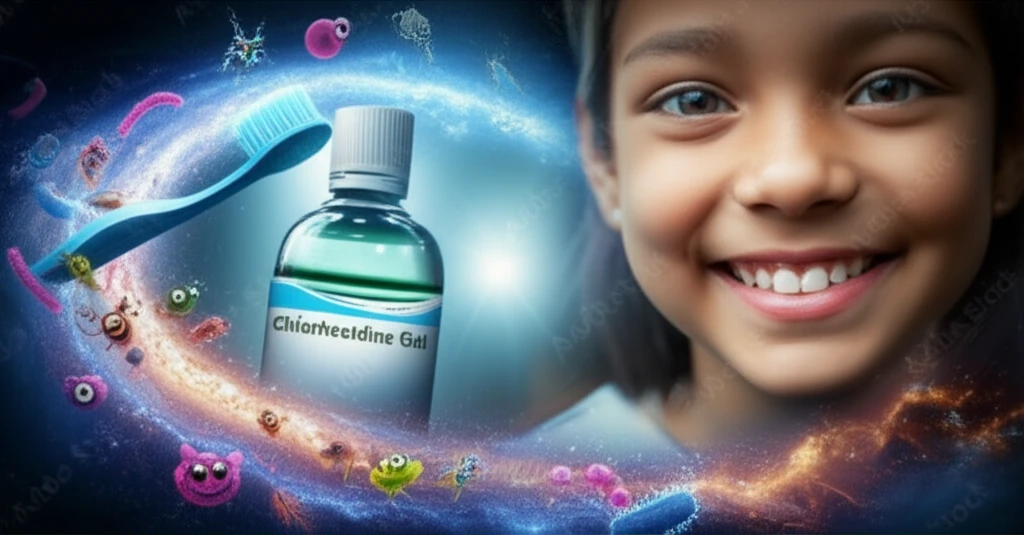
Is Chlorhexidine the Answer? Rethinking Children's Dental Care
"A fresh look at how professional dental cleanings and antibacterial treatments impact oral health in kids."
Aggressive periodontitis (AgP) is a serious gum disease that affects children and adolescents, leading to rapid bone and tissue loss around teeth. While relatively rare, it's more common in some populations and can have lasting impacts on oral health. A key player in AgP is a bacterium called Aggregatibacter actinomycetemcomitans, often passed from mother to child. This bacterium, along with others, forms biofilms (plaque) that can trigger destructive immune responses.
To combat harmful bacteria, dentists often use chlorhexidine digluconate (CHX), a powerful antiseptic. CHX comes in various forms, including gels and mouthwashes, and can effectively reduce bacterial counts in the mouth. However, the long-term effects of CHX, especially in combination with professional dental cleanings, aren't fully understood. There's a need to understand how these treatments shift the balance of bacteria in children's mouths.
This article explores a study that investigated the additional effects of using CHX gel after professional dental cleanings in children. The study tracked levels of A. actinomycetemcomitans, Porphyromonas gingivalis, and Streptococcus mutans to see how these bacterial populations changed over time with different CHX concentrations. The goal was to understand if CHX gel provides extra benefits beyond a standard professional cleaning and how it affects the overall oral environment.
Do Chlorhexidine Gels Really Boost the Benefits of Professional Cleaning?

The study involved 26 children with high levels of A. actinomycetemcomitans and significant plaque buildup. The children were divided into four groups: one receiving a placebo gel (control), and the other three receiving CHX gels with varying concentrations (0.5%, 1%, and 2%). After an initial professional dental cleaning, the gels were applied for four weeks. Researchers then monitored the children's saliva to track changes in bacterial counts at one week, one month, and three months after the treatment ended.
- P. gingivalis, a bacterium associated with gum disease, was reduced in all groups starting one week after treatments.
- The 2% CHX concentration seemed to lower A. actinomycetemcomitans levels more effectively, but it also appeared to increase S. mutans levels. This is a key finding, as S. mutans is a major contributor to tooth decay.
- Despite these initial shifts, the combination of professional cleaning and CHX gel treatments didn't show significant additional antimicrobial effects compared to cleaning alone.
Striking a Balance: Long-Term Strategies for Children's Oral Health
The study underscores the importance of regular professional dental cleanings for children. These cleanings effectively reduce harmful bacteria and create a healthier oral environment. While CHX treatments can play a role, they may not always provide significant additional benefits and could potentially disrupt the natural balance of bacteria in the mouth.
Parents and dentists should carefully consider the potential risks and benefits of using CHX gels in children. The concentration of CHX, the child's individual risk factors, and the potential for S. mutans overgrowth should all be taken into account. More research is needed to determine the optimal use of CHX in pediatric dentistry.
Ultimately, maintaining good oral hygiene habits, including regular brushing, flossing, and professional cleanings, remains the cornerstone of preventing aggressive periodontitis and promoting lifelong oral health for children. CHX treatments might be a useful tool in specific cases, but they shouldn't replace the fundamentals of preventative care.
